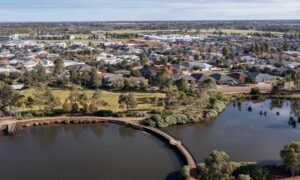More than a cookbook, a historical and cultural journey into festive foods.
Feature image credit: Jan Kershaw
This style of cookbook is becoming increasingly popular and it’s no wonder why. People who like to cook often want to know more about the culture and history of the food they are making. Regula Ysewijn’s book on festival baking from the Low Countries includes some fascinating facts regarding the actual geography of the Low Countries, their cultural and food history, and its representation in art over the centuries.
For the author, growing up where family food was regarded as merely fuel, culinary explorations took place only when they were on holidays. Thus interesting or unusual food became associated with “elsewhere” and she suggests perhaps this whetted her appetite to explore the culture of food both in her homeland, modern day Belgium, and overseas.
The book is a quality hardback production, with wonderful photographs of the recipes, equipment, the countryside and reproductions of art featuring the festival foods. While the art works are identified by date and artist, with credit given to the appropriate museum, it was disappointing to find photographs of the countryside and towns were not. There is a lovely picture of houses reflected in a canal but no clue as to where this might be. Given there is a comprehensive index and list of sources, this seems to be a big omission.
Vlaamse wafel – also known as Brussels waffles – (page 40)

With the exception of full fat milk, for which I substituted low fat milk, all the other ingredients were pantry or fridge staples. I halved the recipe as it was for 12 waffles and there are only two of us. This made no difference to the quality of the end product. The recipe is clearly set out and easy to follow but if you want waffles for breakfast, you’ll need to start the night before as there is an hour’s resting time to develop the yeast. The batter keeps well overnight.
Thank you to my friend Patricia for the loan of her waffle maker as you can’t make waffles without one. The mixture is quite thick and I needed to work quickly to spread it evenly but it crisped up delightfully and was delicious served with apricots and yoghurt.
Flemish Vollaard (page 72)

This is truly a festive loaf as due to its size it was made in a bakery and rarely baked at home. The inclusion of eggs, butter, and sugar all contribute to this being the festive bread of southern Belgium. We see it represented in a painting celebrating Epiphany by Peter Snijers (1681-1752).
Ysewijn has halved the recipe because a loaf made with two kilograms of flour would not fit in a domestic oven. Even at half size, this loaf needed to be placed diagonally across my baking tray to fit. Although I have an electric mixer with a dough hook, most of the kneading was done by hand as the mixture is quite dry. Again, there are resting times for the yeast to develop, a total of one and a half hours.
The only difficult part was shaping the dough to look like the picture in the recipe book. The bread is very soft, with a lovely crust, and makes terrific toast when it has started to get dry.
These recipes are appropriate for festive fare, as at our house, both these recipes would be for a special occasion — not because of expensive ingredients but rather because of the time needed for preparation and proving.
Reviewed by Jan Kershaw
The views expressed in this review belong to the author and not Glam Adelaide, its affiliates, or employees.
Distributed by: Murdoch Books
Released: February 2023
RRP: $55.00






















